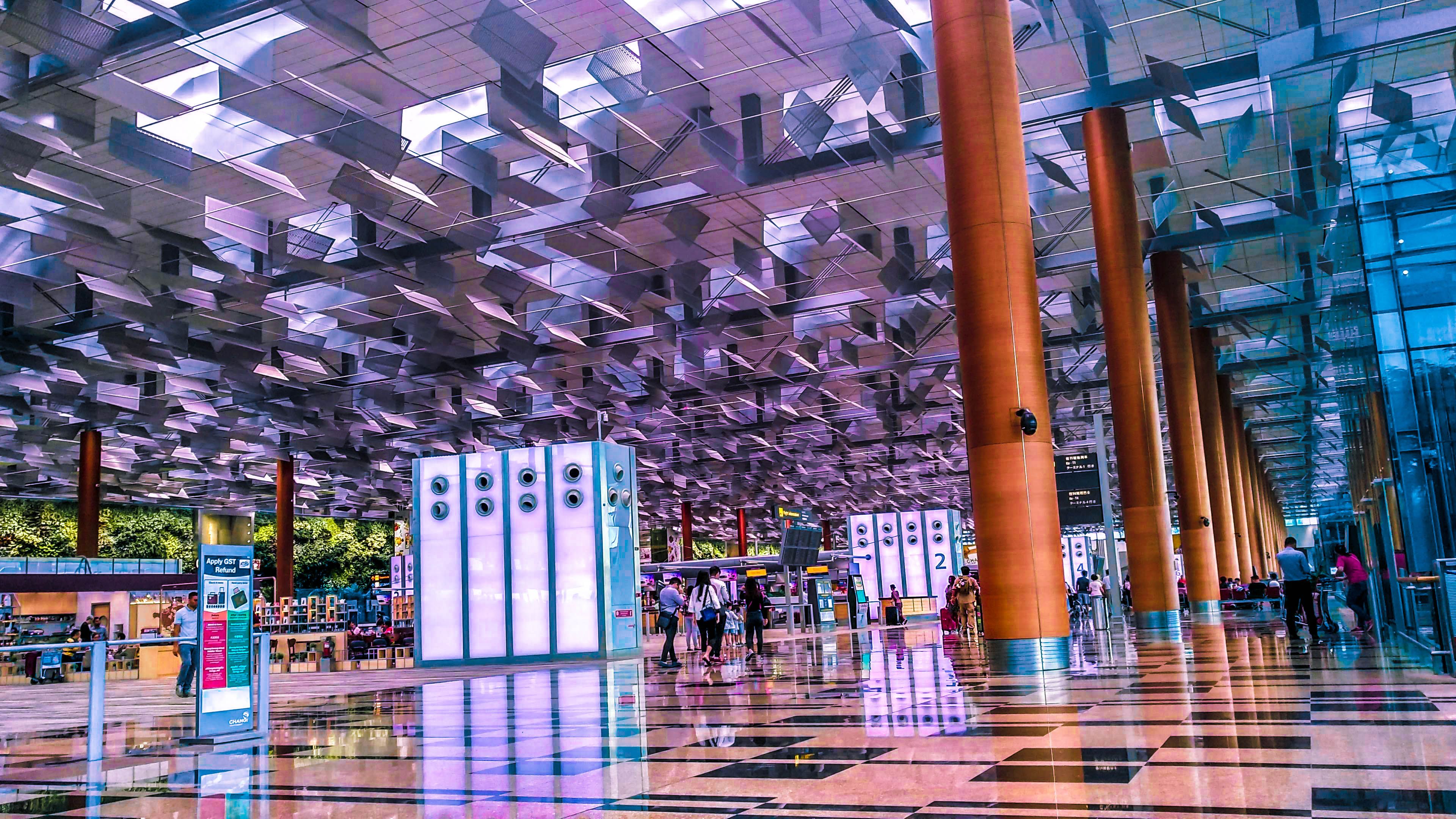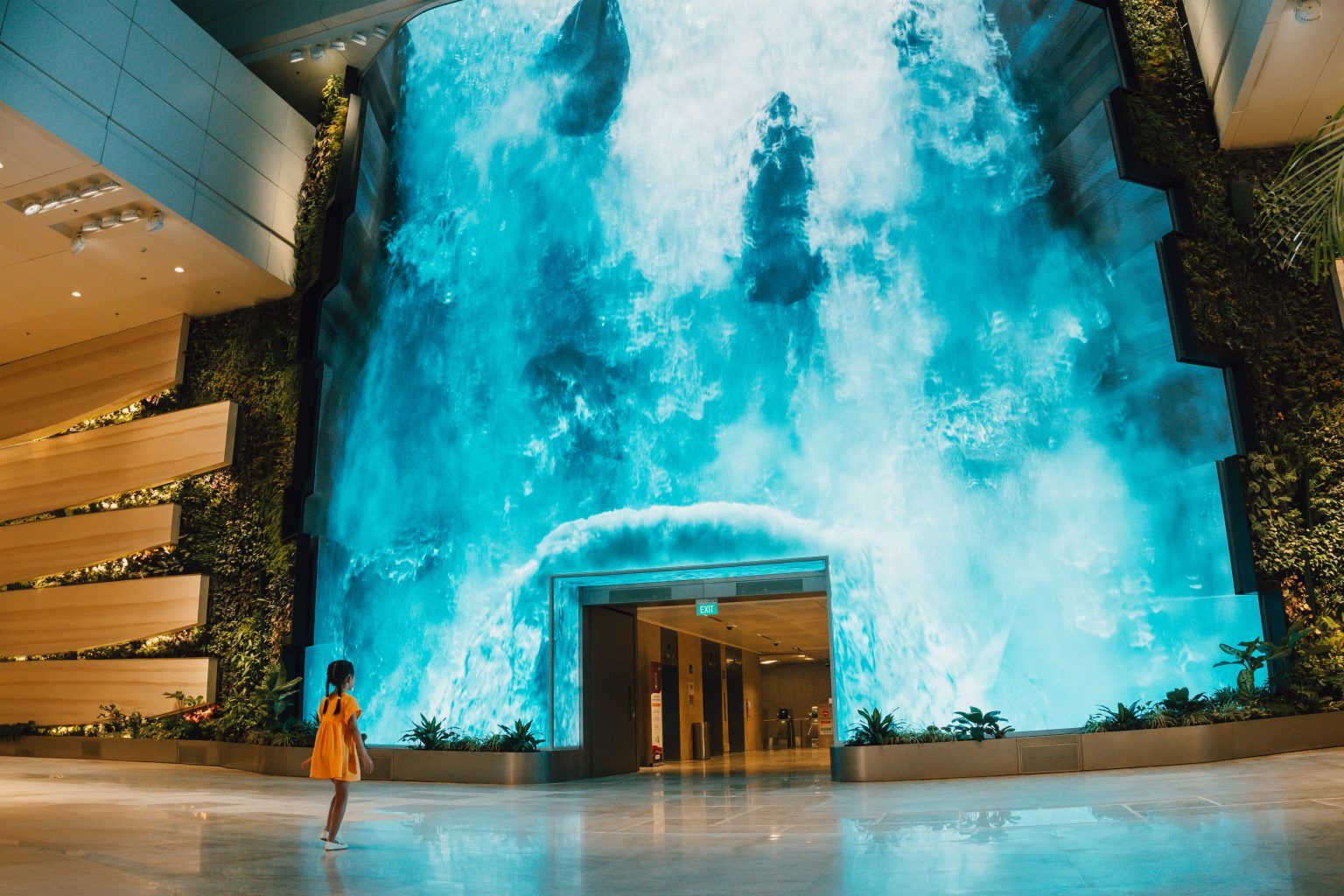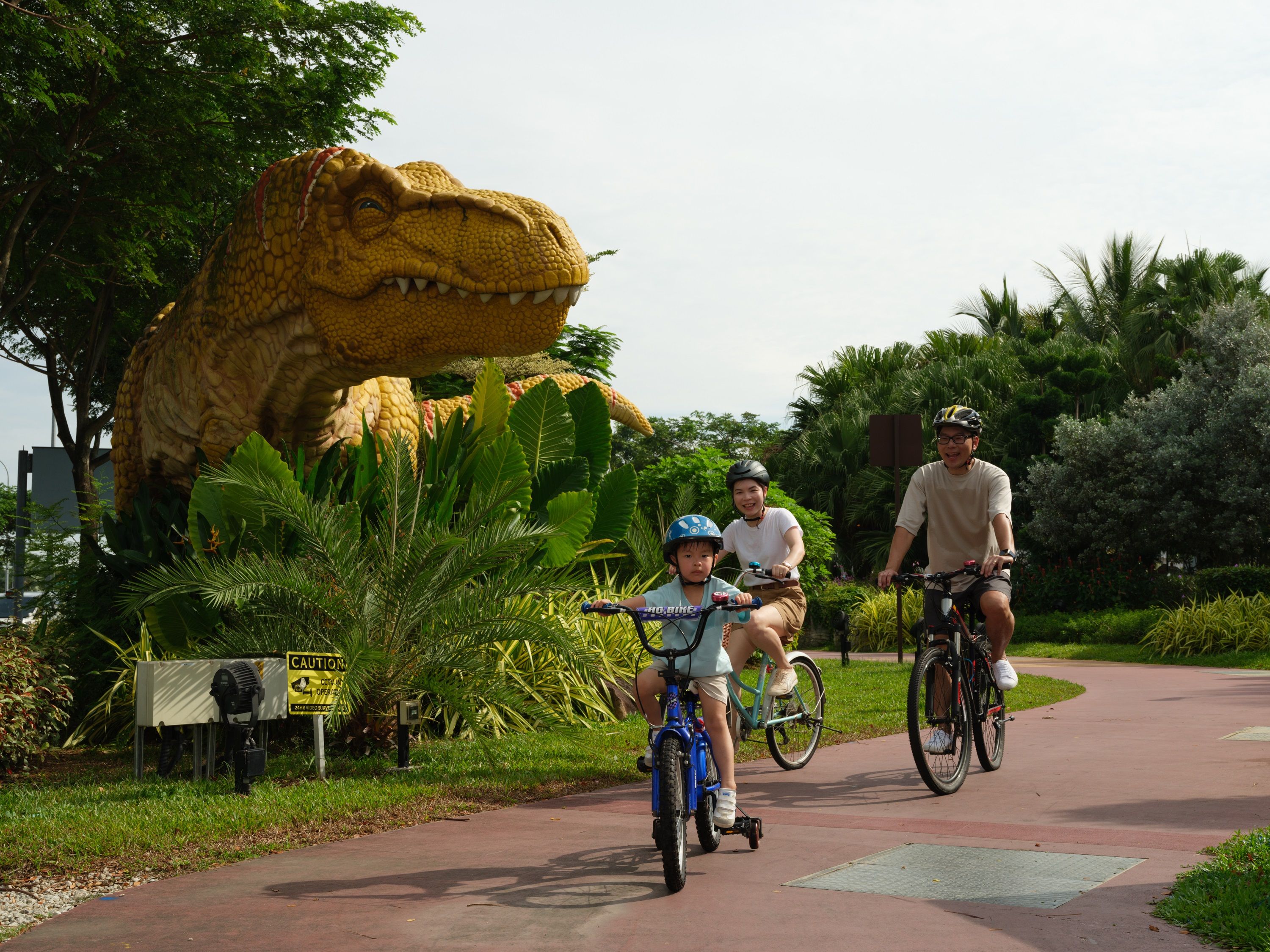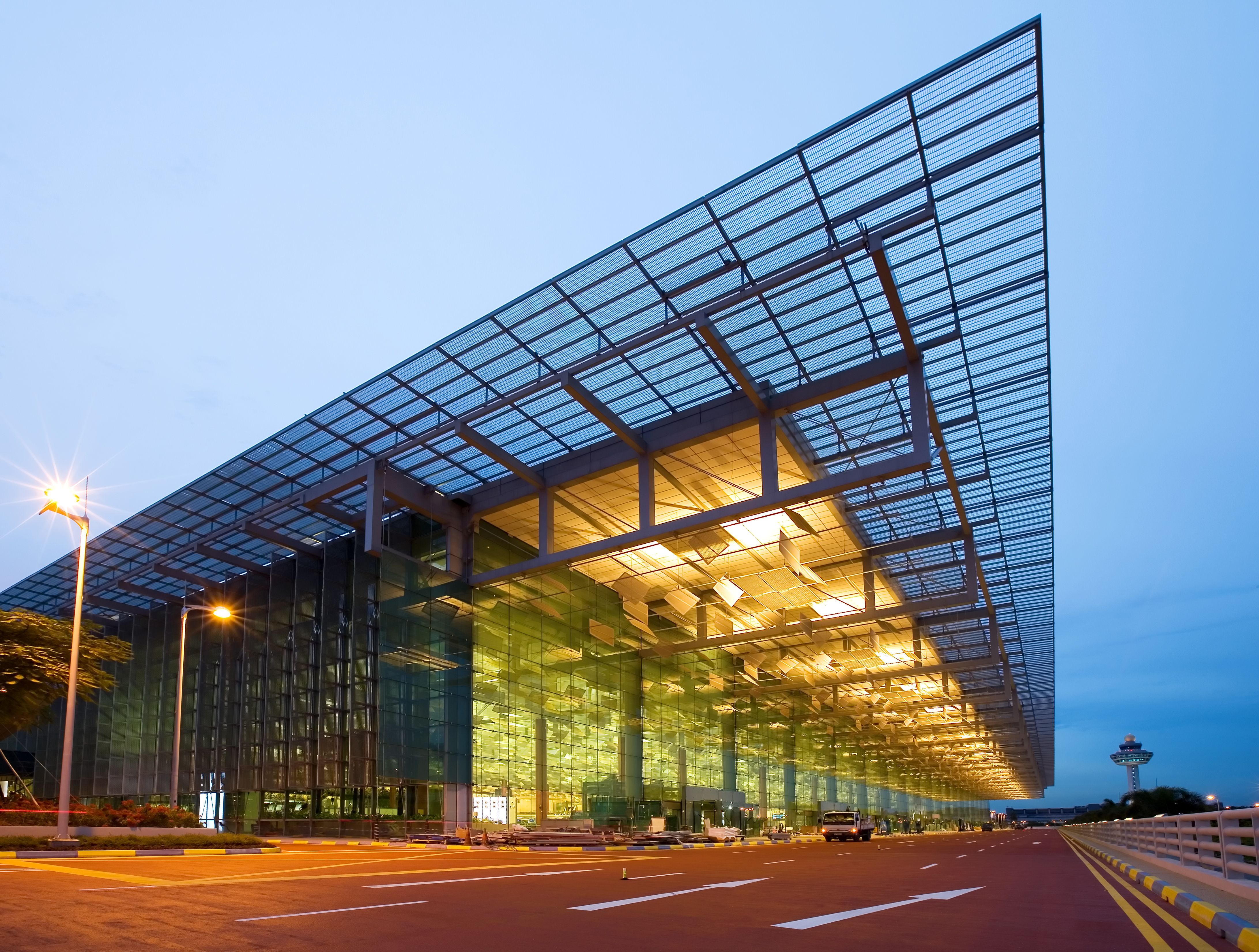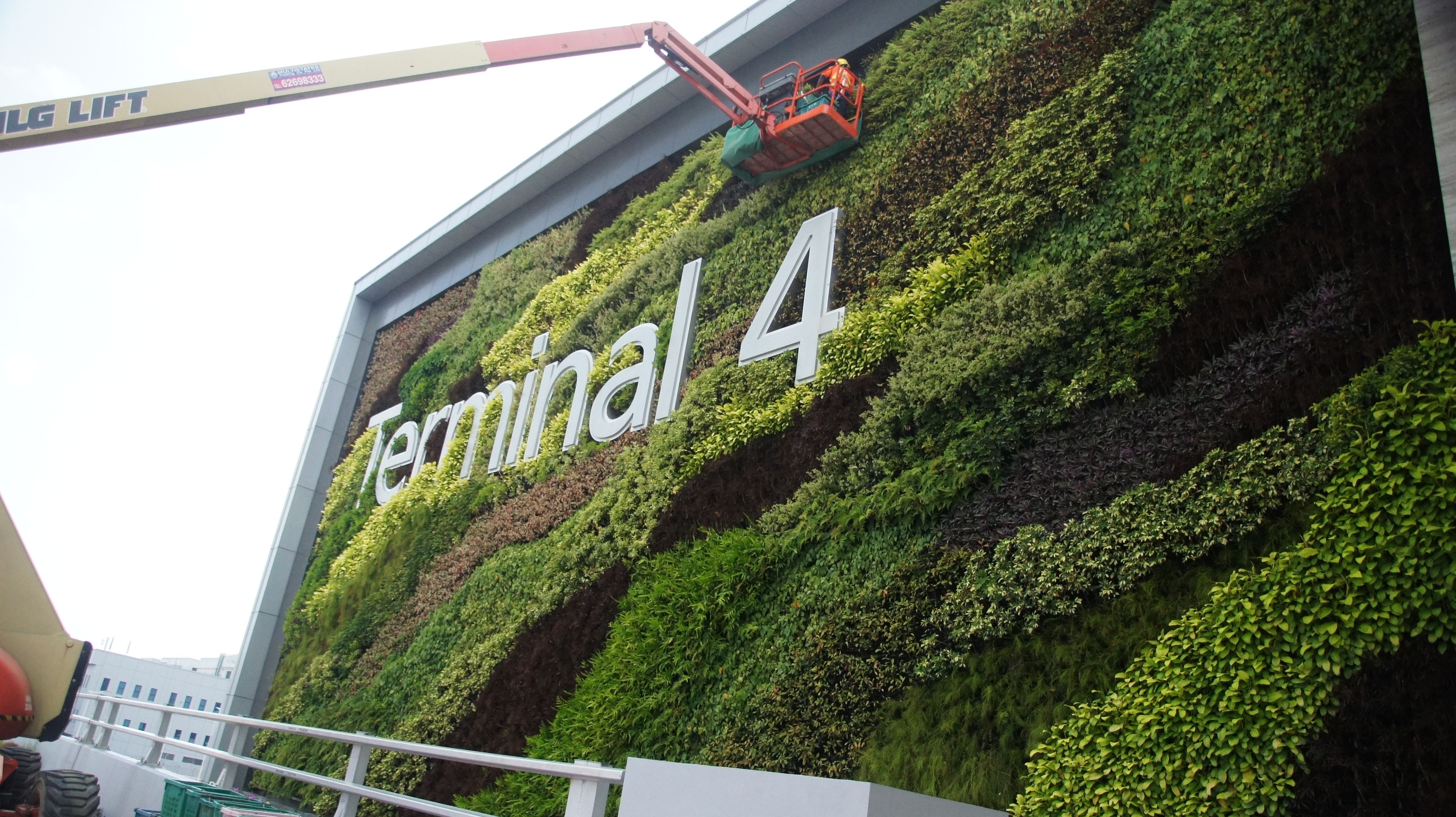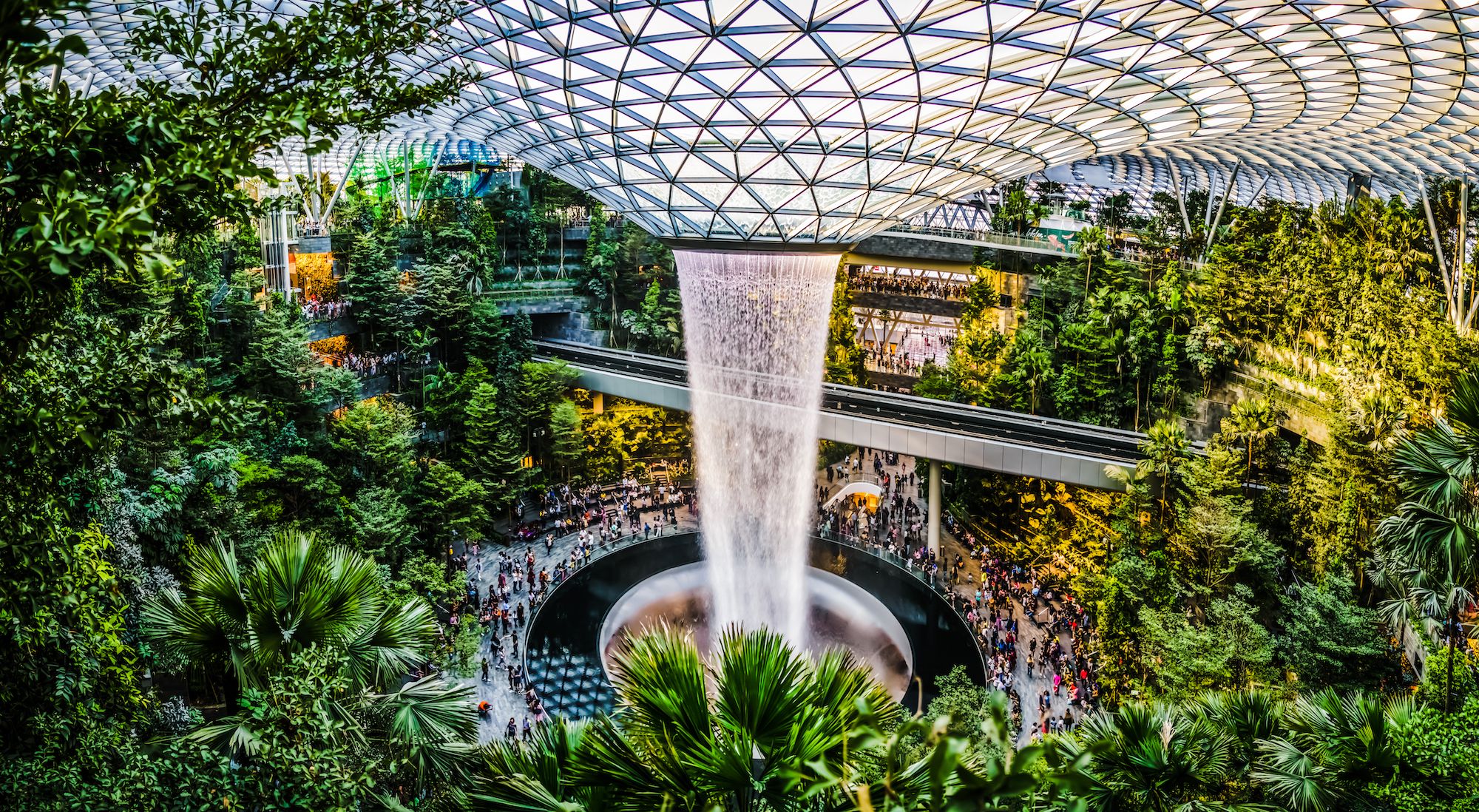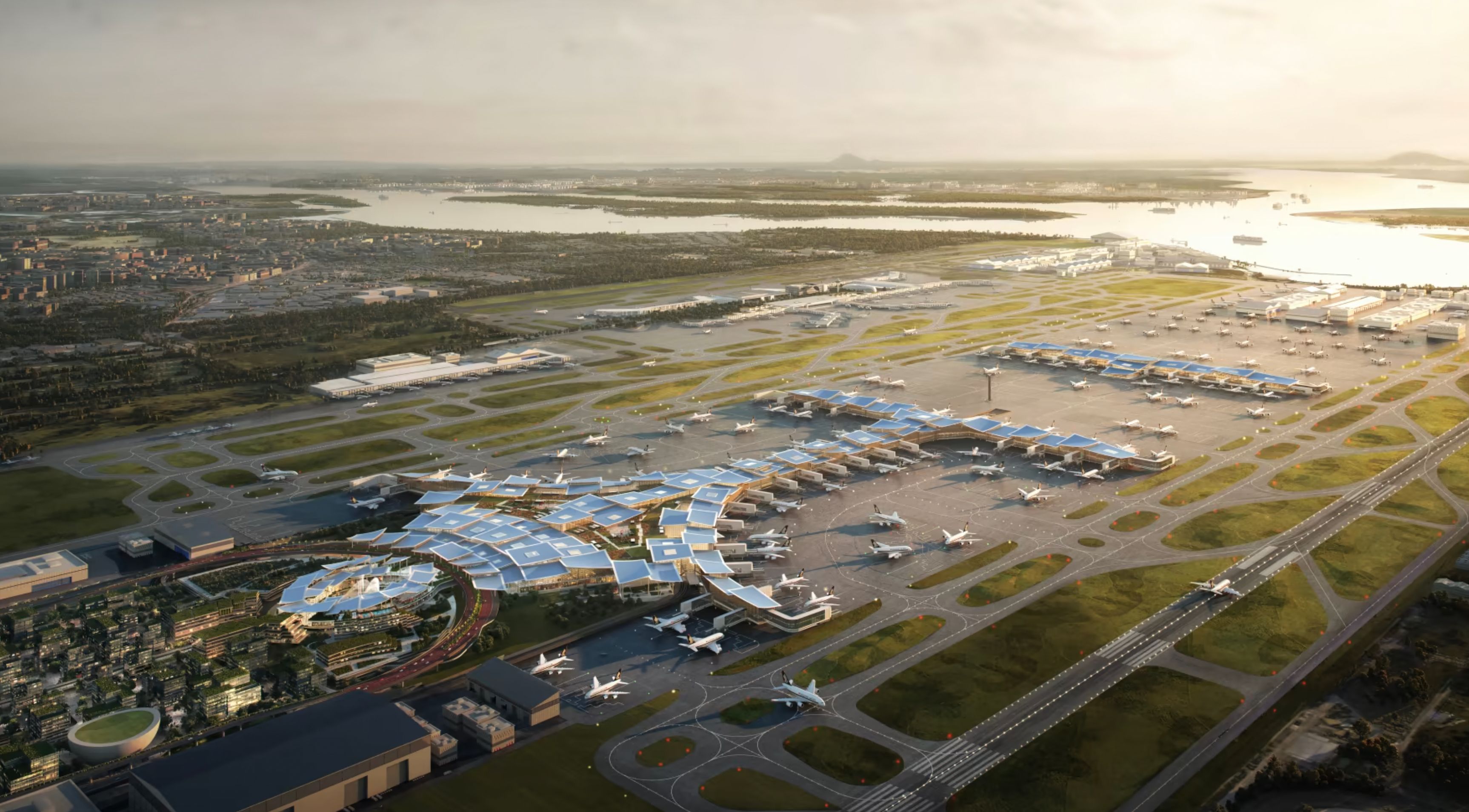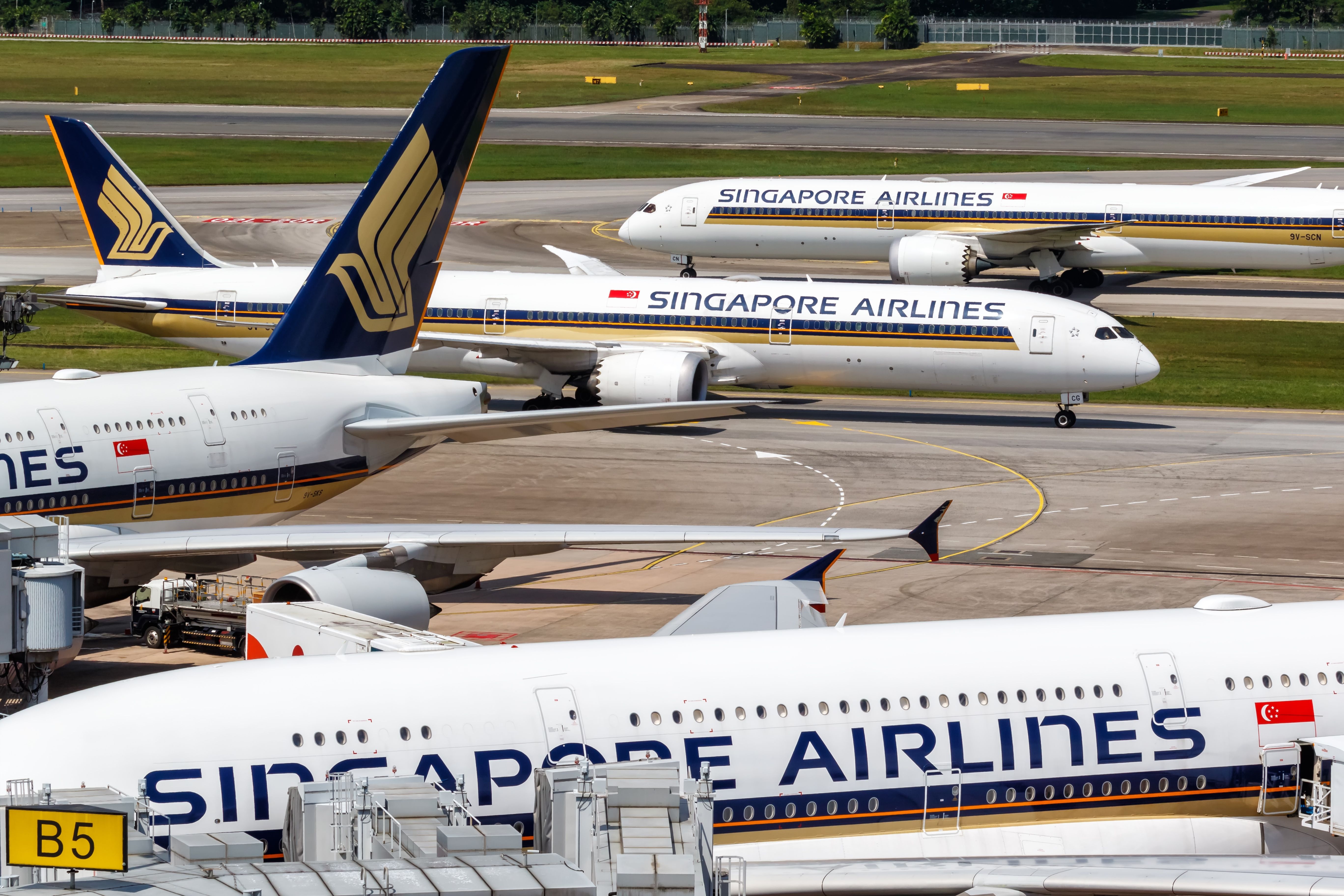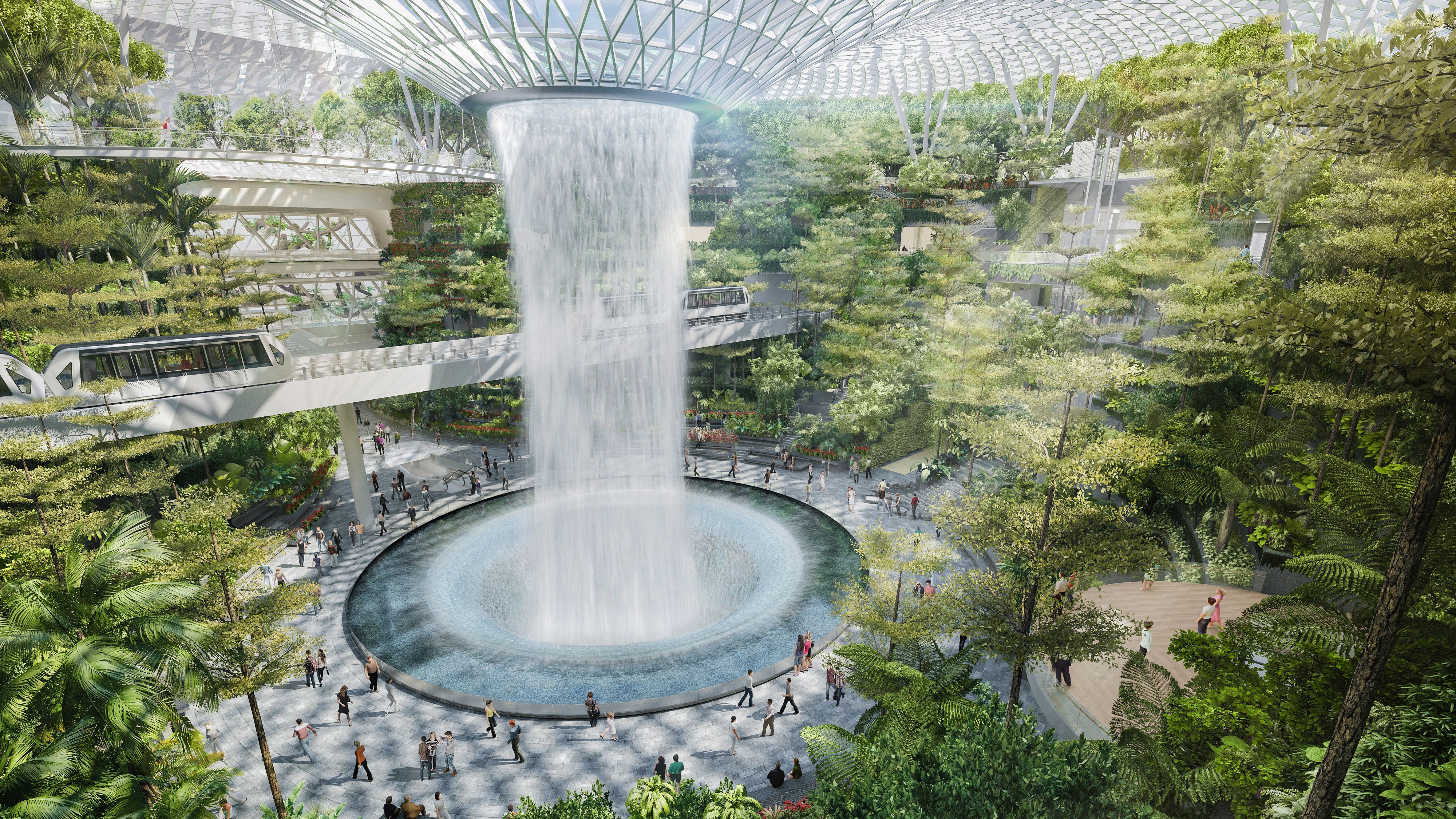Serving more than 100 airlines, Singapore Changi Airport (SIN) is one of the largest transportation hubs in the Asia-Pacific region. The award-winning airport, comprising four terminals and three runways, is often considered a destination in itself, but how does the passenger experience vary at each of the four terminals?
Terminal 1
In July 1981, Singapore Changi Airport’s first terminal was opened at the northern end of the 9.7-square-mile (25-square-kilometer) airport site. Terminal 1 is built in an H-shape to maximize gate space and hosts international flights operated by a long list of airlines that includes British Airways, KLM, Turkish Airlines, Qantas, Air France, Japan Airlines, and Qatar Airways.
Note that alliance members tend to be spread across terminals at Singapore Changi Airport – many of the oneworld alliance members are in Terminal 1, for example, but Malaysia Airlines is in Terminal 2, and Cathay Pacific is in Terminal 4.
At an airport known for its passenger facilities, Terminal 1 does not disappoint. Passengers waiting to board their flights are treated to duty-free shopping and an array of free attractions, such as the Kinetic Rain Sculpture. The mesmerizing art installation features 1,216 bronze droplets that move to resemble flight movements.
The terminal is also home to the Tropical Rainforest Vivarium, where you can find over 50 species of flora and nearly ten species of fauna, and the Water Lily Garden, featuring the largest aquatic plant in the world.
Photo: Urban Vignette | Shutterstock
In addition to the usual airline lounges that one would expect, there is also a swimming pool and jacuzzi in the transit area, featuring runway views. This is part of the Aerotel Airport Transit Hotel and is available to hotel guests free of charge or to any other passengers for a fee of S$25 ($19).
Terminal 2
Terminal 2 was the second terminal opened at Changi at the end of 1990 and is located adjacent to Terminal 1. Terminal 2 is larger than Terminal 1 and, as of 2023, is home to several Star Alliance carriers, including Air India, Lufthansa, SWISS, Etihad Airways, and United Airlines, which made the move over from Terminal 2 earlier this year.
The airport’s home carrier, Singapore Airlines, also operates flights from Terminal 2 to a handful of destinations across South East Asia, with the rest of the airline’s flights operating in Terminal 3.
Photo: Changi Airport Group
Terminal 2 was closed in April 2020 following the dramatic reduction in passenger traffic due to the pandemic and Singapore’s strict lockdowns, providing the ideal opportunity to fully renovate the terminal. The 3.5-year project added 226,000 square feet of floor space and increased the airport’s total capacity by 5 million passengers. At the time of Terminal 2’s full reopening on November 1st, 2023, Changi Airport Group’s Terminal 2 Program Director, Lye Teck, said,
“With T2, we sought to enhance the passenger experience, bringing together a modern terminal inspired by nature, with immersive digital experiences, innovative technology, as well as transformative retail and dining concepts that create a sense of place.”
Like Terminal 1, the new Terminal 2 has several themed gardens for passengers to unwind as they await their flights. The terminal’s natural theme, which includes a digital waterfall and a digital sky that changes color depending on the time of day, creates a calming environment for passengers.
Photo: Changi Airport Group
Just next to Terminal 2 is the GoCycling bicycle rental facility, from which transit passengers are entitled to two hours of free bike rental to explore the surrounding area.
Terminal 3
Terminal 3 was completed in January 2008, adding a capacity of around 22 million passengers annually. Its large glass structure maximizes natural light, allowing the terminal to hold many green features, including a 16-foot-high green wall.
There are plenty of fun features in this terminal, too, including a free cinema and The Slide – the world’s tallest slide found in an airport. At four stories high, this adult- and kid-friendly slide is an experience not to be missed. Terminal 3 also boasts the Butterfly Garden – an aviary-style enclosure home to more than 1,000 tropical butterflies.
The terminal boasts 28 jet bridges, eight of which can accommodate the Airbus A380. All Singapore Airlines flights to destinations outside of South East Asia now operate from Terminal 3, and flights operated by the likes of Garuda Indonesia, Asiana Airlines, and Eva Air also depart from here. Several airport lounges, including Singapore Airlines’ main lounges, and the Crowne Plaza Airport Hotel, can be found in Terminal 3 as well.
Terminal 4
Terminal 4 is equipped to handle over 16 million passengers a year, with 21 contact gates and eight bus gates, and sees primarily regional flights. Cathay Pacific and Korean Air were the first airlines to operate at the terminal when it opened in October 2017. Terminal 4 is also where carriers such as AirAsia, HK Express, and Bamboo Airways are based.
While Terminals 1 to 3 are interconnected via Skytrain, Terminal 4 is a standalone building connected to the rest of the terminals by complimentary shuttle buses. Like the airport’s other terminals, Terminal 4 offers a variety of attractions and art installations for passengers looking to pass the time before boarding. One popular must-see is the Petalclouds, an iconic kinetic sculpture suspended 656 feet (200 m) across the Central Galleria—the installation moves in sync with animated lighting and music.
Jewel Changi Airport – a stunning addition
In 2019, Jewel Changi Airport opened. This is not classed as a terminal, as it has no check-in facilities or gates, but is a separate building with retail, dining, and other services. It is linked to the main airport and its terminals using the SkyTrain – but is only accessible landside (transit passengers would need to enter Singapore to visit).
Photo: DerekTeo | Shutterstock
The design is immaculate – and quite rightly attracts many non-traveling visitors to the airport. There is a large indoor waterfall, an indoor garden spanning five stories, and the Canopy Park at the topmost level, featuring gardens and leisure facilities.
Are four terminals enough?
While the focal point of all four terminals seems to be the array of exciting attractions, Singapore Changi Airport is, at its core, a bustling airport. According to data from OAG, the airport was the third-best international airport in October 2023, behind Dubai (DXB) and London Heathrow (LHR). Just like many other airports, expansion will be needed – and is planned.
Before the pandemic, the airport saw around 380,000 commercial aircraft movements per year, carrying over 65 million passengers. As aviation across the region finally rebounds, the question now is whether its current four terminals will be sufficient to meet future levels of air travel.
Image: Changi Airport Group
After two years on hold, Singapore Changi Airport’s expansion plans have regained momentum, with a new fifth terminal planned as part of the Changi East development – an area the size of 667 soccer fields, including an additional runway and an industrial zone. The country’s Prime Minister, Lee Hsien Loong, confirmed the expansion again in August 2022. He said:
“We concluded that the future of aviation remains bright. Now, with borders re-opening, people are traveling again. Passenger traffic has already exceeded half of pre-COVID-19 levels. In the longer term, air travel will keep growing because of a fast-expanding middle class in our region. Hence, we decided to go ahead and restart the T5 project.”
With the world-class passenger service offered at each existing terminal, passengers at Terminal 5 can expect to enjoy an unforgettable experience when it opens in the mid-2030s. Airlines will also benefit from the latest technology, including robotics and autonomous airside vehicles, and infrastructure to support the use of sustainable aviation fuel.
Terminal 5 will be one of the largest in the world, adding capacity for 50 million passengers per year and growing the airport’s total capacity to a staggering 153 million passengers per year.
Photo: Markus Mainka | Shutterstock
Singapore Changi Airport is on course to remain one of the world’s favorite airports, with industry-leading passenger facilities spread across its four terminals. The airport’s accomplishments speak for themselves – since opening in 1981, it has won over 500 awards from organizations such as Skytrax and Business Traveller.
Have you flown through Singapore Changi Airport recently? Which is your favorite terminal? Share your experiences by commenting below.


